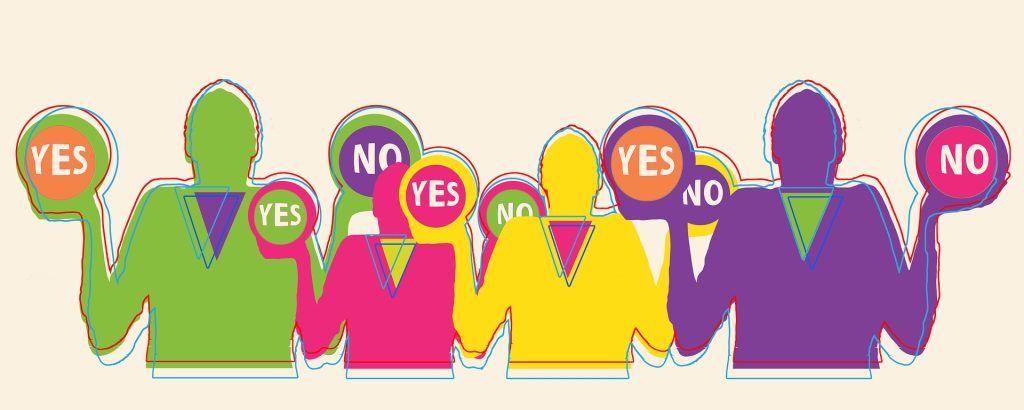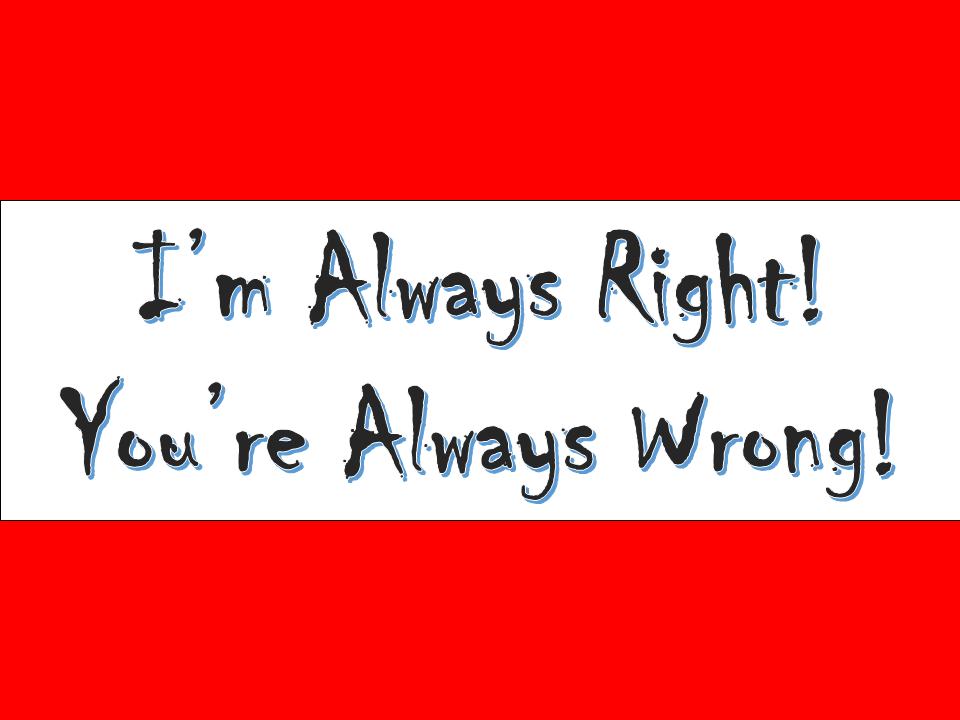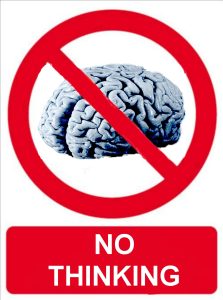How Can We Recognize Attempts to Dupe Us Into Believing Untrue Things?
16 Examples

Logic – is one of the key ingredients that is missing in the volumes of disinformation being fed to the public, worldwide. Regardless of whether it comes from the worlds of business, politics, religion, or cultural groups, so much of what we read and hear is based on appeals to our emotions to cause us to believe things that are untrue.
BTW, most of us do some of this some of the time. See examples below.
Other people are paid professionals who do it to convince masses of people to do or think something they might not have done otherwise. It matters. Let’s learn their tricks.
Fallacious Arguments

Does it defy logic? Manipulators consciously use fallacies (misleading notions, emotions, and illogical reasoning) to derail us from distinguishing truth from fiction. Fallacies result in mistaken beliefs, based not only on lies but on unsound or illogical arguments. (Note: Fallacious Arguments is one topic among the many classes I teach for small businesses and personal development.)
“Argument” Does NOT Mean “Fight!”
I’m using the term here as synonymous with “rationale,” “point of view,” “reasoning,” or an appeal to something other than logic. “Argument” is the terminology used to depict the positions taken by the opposing sides in a contest between debaters in formal debates.
Let’s get the formal definition.
Argument, in logic, reasons that support a conclusion, sometimes formulated so that the conclusion is deduced from premises. Erroneous arguments are called fallacies in logic (see fallacy). In mathematics, an argument is a variable in the domain of a function and usually appears symbolically in parentheses following the functional symbol.
Is It True? Is It Real?
Could It Be a Partial Truth with a Misleading or False Conclusion?

Against my better judgment, given the current political climate, I have decided to post on this topic. However, I’m also doing it BECAUSE OF the current political climate.
Below, I’ll give examples of “arguments” made with either a purposeful or an inadvertent attempt to persuade people of something that is neither factual nor logical. The examples are NOT just about politics. Be brave. Give it a try and see if you recognize these tactics or, actually, might have used them without intending any harm.
16 FALLACIES IN AN ARGUMENT OR POSITION STATEMENT

The following categories are formally recognized fallacies in arguments, such as would be used in debates.
Which ones do you think are used the most in advertising – especially as the political campaigns heat up?
Which ones do you use to “get your way” or to persuade someone to agree with you about an issue?
Most of these are designed to avoid logic and to stimulate the brain with colorful emotion-evoking imagery, often related to causing a fear response. Let’s go through them now.
Scare Tactics

Scare Tactics are arguments that use legitimate and/or paranoic fears to incite panic and/or prejudice.
- A typical example is the use of people’s fear of crime and criminals to entice people to vote for someone who professes to be “a Law and Order candidate,” regardless of that person’s record (if any) on the issue.
- A malevolent example is when politicians say all immigrants come to a country bearing disease, crime, and drugs, when – in fact – that is blatantly untrue and without substantiation. It can be fact-checked. The problem with this and so many other issues is that people will not take the time to fact-check statements and/or don’t know where to go for factual information.
- A different kind of age-old standby is an assertion that teens who masturbate “will go blind.”
- …not to mention … a timeless practice … invoking fear of “the boogeyman will get you” when parents or babysitters are talking to very little children to induce them to ‘behave!’
Either – Or Choices Defy Unspoken Logic

Either-Or Choices are arguments that reduce the options for action to only two choices. This argument is used often in personal relationships or by people who really can think only of two alternatives.
- For example, someone might want you to choose between having a career or having a family, when – in fact – most people can (and may have to) do both.
- This also is a consciously chosen argument when people are trying to get children (or a spouse) to do something.
- “Would you rather eat the spinach or the carrots first?
- Would you rather skip cleaning your room and be grounded, or clean your room and then be free to go to the game tonight?”
- “If you don’t (do what I want you to), then I’ll (inflict the following punishment or withhold the following thing that you want: dessert, money, sex, a part in a movie, etc.)

More Examples
Do you think (this) or (that) are the only choices? The person may have many viable alternatives, that do not instantly come to mind, but that can be enacted after a little thought and imagination.
- Do you want to go to the game or to the ballet? Neither. Maybe I don’t want to go anywhere. Maybe I’d rather go to a concert. Instead, maybe I want to go to one of those things, but with someone else!
- Do you want to vote Republican or Democrat? The answer can be one or the other, neither, or both. The latter is known as a “split ballot” in which the person chooses candidates from both parties and even a 3rd party if one is on the ballot. Alternatively, a person might vote for some, but not all candidates, or choose to “write in” a candidate who is not on the ballot. In other words, the choice is not just binary except in authoritarian governments where people are voting at gunpoint, as recently happened in Ukraine when Russia held referenda in captured areas.
Slippery Slope Reasoning
![]()
Slippery Slope arguments exaggerate the likely consequences of an action, usually to frighten readers.
- This is the argument that any regulations about gun ownership will lead to the confiscation of all weapons or that anyone who uses marijuana is using a “gateway drug” which will lead that person into an addiction to more dangerous drugs.
- Another example of fallacious reasoning is ‘when the government helps a family in need because of job loss, that family will want to stay on “welfare” forever and never work again.’
- Similarly, in conjunction with that assertion, manipulators commonly use pictures of minority group individuals, despite the fact that the majority of people using government welfare benefits are Caucasian. It is a not-so-subtle way of appealing to prejudice.
- In addition, it is another example of something easily fact-checked, but the intention of the purveyors of this kind of thinking do not want you to learn the facts.
Appeals to Sentimentalism

Sentimental Appeals are arguments that use tender emotions excessively to distract readers from facts.
- We see examples of this in comedic movies. Think of the “guilt trip” placed on a student who wants to attend college in a town away from the family home. The Mother is clutching her heart and making supplication, with pleading, tear-filled eyes, to the young man or woman. “Why do you want to LEAVE me?”
- It’s not necessarily about wanting to leave the parent, but, rather, wanting to pursue an education in a particular field in which that educational institution specializes.
- The emotional tug is intended to override the fact that the chosen field is the best path for the student to fulfill his/her talents or perceived “mission in life.”
- We even have a term for it: “The Sentimental Favorite.” That is the person for whom we vote an award or put into a position of power even though other candidates are better qualified.
Bandwagon Appeals

Bandwagon Appeals are fallacious arguments that urge people to follow the same path that everyone else is taking. Examples of the underlying concepts are:
“keeping up with the Joneses”
conformity will make a person more popular
other people are doing it, so (you can, it’s safe for you to, if you want to be accepted), you should do it also.
- A typical example is when a person comes to the door of your home and tells you your neighbors have just purchased his/her product or service and wouldn’t you like to also!
- For teens, “Everyone else is going to the ………” “Wah! Why won’t you let me go? You’re mean, and I hate you!”
- On a larger scale, it’s following the leader(s) – literally – on social media and judging oneself and others by how many “likes” or followers they have, rather than by substantive, truthful post content.
- In politics, it means going along with the crowd of your friends, business associates, or neighbors, even when you disagree with the ethics or positions of the person for whom “everyone else” is voting. (AKA “Goin’ Along to Git Along)
Appeals to False or Higher Authority

Appeals to False Authority are arguments that draw on the authority of widely respected or merely famous people, entities, institutions, and texts.
- Typical examples include referring to or quoting “Thought Leaders,” regardless of their self-serving interests or ethics.
- Similarly, we find examples when media interviewers are asking famous folks for their opinions on topics about which they have no expertise. In that vein, “followers” may do what the celebrity does, even though the celeb may not have any legitimacy in the field.
- This is part of the Celebrity syndrome in which people confer unearned intellectual or influence status onto people who have become well-known for acting, sports prowess, etc.
- It’s a wonderful thing when celebrities can cause people to give millions of dollars in aid to people who need food, housing, etc.
- It is not a wonderful thing when that happens, and the famous person absconds with some or all of the funds for personal wealth acquisition.
- Sometimes, this appeal is even referring to “The Highest Authority.” “God wants you to do this … or wants you NOT to do this.” “It’s God’s Will.” “The Devil made me do it.” The question then is whether that is a legitimate stance or one influenced by a cult leader, for example, who wants to maintain power and control over followers.
Dogmatism

Dogmatism implies that there is no opposing argument.
- Just as people once were convinced that the earth is flat and that we would fall off the edge if we got to the horizon line, people now make arguments as if there were no other possibilities. There are times when advancing knowledge, science, (and photography) dispel once-held “truths” and expose those firm beliefs as being untrue.
- A religious example is a declarative statement or an admonition, “If you do XYZ, you will burn in Hell.” Whereas a person might believe that, it leaves no room for the companion teachings about forgiveness, making amends, or being on earth as a kind of school in which lessons are learned through mistakes. The truth will be undiscovered, perhaps, until one’s death.
There is No Logic in False Moral Equivalence Arguments
AKA “What Aboutism”

Moral Equivalence is arguing that serious wrongdoings do not differ in kind, consequence, or importance from minor offenses.
- Let’s see. Person x stole some office supplies for a kid’s project due the next morning. Person Y stole millions of dollars from people who thought they were giving to a charitable cause, but the money really went to purchase his or her private yacht. They both stole. There is no moral equivalency.
- We see so many examples of this in current-day politics! These are cases in which equivalency is drawn between one person committing one administrative crime (perhaps affecting only the self) and a large group of people committing a multiplicity of felony crimes (resulting in death and destruction). They are mentioned in the same paragraph as if the results were of equal impact, import, and level of severity or causality. It’s called “What Aboutism” in current-day parlance.
- The purpose of comparisons between or among dissimilar things usually is to make the severe behaviors seem less alarming or dangerous. At other times, they are to make the comparatively innocuous person or events seem more consequential or dangerous than is warranted.
Ad Hominem Arguments

Ad Hominem arguments attack the character of a person rather than the claim made. This one speaks for itself.
- When a person assassinates the character of another person in an unwarranted fashion, it usually indicates the speaker
- is prejudiced
- does not have valid, substantive arguments to present to the listener
- has been grossly misled about a person’s character
- knows the slander is untrue but wants to discredit the person who poses some kind of threat to the agenda the perpetrator is promoting.
- It also can mean the speaker categorizes YOU as a person who will “fall for it” and who will not distinguish fact from fiction.
Hasty Generalizations

A Hasty Generalization is an argument that draws an inference from insufficient evidence. It’s like leaving the starting gate before the race has begun. You have formed an opinion and, perhaps, jumped into action without having all the facts to consider, and, knowing those facts, would change what action you take (if any).
- Here is an example from my own life. When I was much younger, I was working in a place that was full of tourists. The husband of one woman kept staring at me, “looking me up and down” to the point that it was really getting on my nerves, thinking he was a “Dirty Old Man.” Just as I prepared to confront him in another room, his wife came to me apologetically, explaining that I look just like their daughter who had died very recently! I was making the hasty generalization that he was another lecherous guy, based on his stares and no other information. I was so glad she came to me (clearly seeing I was disturbed by his behavior) before I decided to confront him.
- Another example occurs regarding racism when someone feels threatened by the sheer presence of a person from another race or assumes that is a person who will commit a crime.
- A third example is when one assumes that, because another person is of a particular political persuasion, they automatically will believe one way or another about an issue, such as abortion, gun control, immigration, climate control, etc.
Faulty Causality
(Could be Called, “Mistaken Identity!”

Faulty Causality is an argument that assumes that because one event or action follows another, the first necessarily causes the second.
- In real life, I contracted Lyme Disease. Therefore, the swelling in my knee is a symptom of Lyme Disease. In that case, it wasn’t. Arthritis was the culprit.
- Because a person is known to have committed one crime, (s)he is assumed to be guilty of another that followed soon thereafter.
- Because there is worldwide inflation of gas prices, higher gas prices in the USA must be the American President’s fault. Note: it isn’t. Whether Trump or Biden or anyone else, no President can CONTROL gas prices set throughout the world by other countries as well as by US corporations.
Begging the Question

Begging the Question is a form of circular reasoning that occurs when the assumptions that are meant to support an argument already presume that the conclusion is true. It is as if the assumption and the conclusion are identical, but one or both may be divorced from objective reality.
- An example is “XYZ is the greatest movie ever made because it is the number one top-grossing movie of all time.
- That fallacious argument does not mention anything that is factual in terms of quality comparisons with other movies, nor does it allow for the fact that a top-grossing movie of all time will change each time there is a new movie with more sales.
- It does not incorporate the opinions of the viewing audience, critics, or the people who put on the production.
- It is using a statement about one point in time to “prove” something that will not remain true.
- Another example is believing that when someone believes in some of the same things that a Republican or a Democrat typically espouses, it means the person IS a Republican or a Democrat, when – in fact – they may have no political affiliations at all or might subscribe to an opposing policy or candidate.
- Another example. “That person teaches about health and wellness; therefore, that person is healthy.” I use this example because many wellness practitioners were led to their calling by having had a serious medical condition (that they might still have)! Furthermore, “healers” – like everyone else – don’t always practice what they preach in terms of exercise, eating habits, etc. Just ‘cuz a person knows what to do and encourages others does not mean (s)he is consistent in taking care of herself or himself.
Equivocation

Equivocation is an argument that gives a lie an honest appearance. It is a half-truth, or it uses words with multiple meanings, to mislead the audience (individually and/or collectively).
- The earth has always had periods of drought, so “climate change” is not real. This statement does not account for the measurable changes and rates of change directly related to mankind’s pollution of the earth and air. Once again, the argument relies on people’s unwillingness or inability to fact-check for reliable statistics and information.
- Here is a different kind of example to help your kids understand better.
Equivocation is a fallacy when a word has more than one meaning and the person arguing confuses the multiple meanings of the word to prove an argument correct. For example, “All trees have bark. All dogs bark. Therefore, all dogs are trees.”[1] This is a fallacy because the two times “bark” is used in the argument have very different meanings from each other, while in the argument, the word “bark” should have the same meaning the whole argument. The first meaning of “bark” is the outer layer of a tree, and the second meaning is a shouting sound that a dog makes. The argument does not work because the person changed the meaning of “bark” in the middle of the argument.
References Jump up↑ “Examples That Illustrate the Meaning of Equivocation Fallacy” (in en-US). 2015-01-19.
Non-Sequitur
A Non Sequitur is an argument in which claims, reasons, or warrants fail to connect logically. One point does not follow from another.

I laugh at this one because the Intentional Use of Non-Sequiturs is a technique employed by those of us who practice Neuro-linguistic Programming (NLP). We use it to help people overcome fears, limiting beliefs, etc. For example, I might be taking a client through a heartfelt, intense exercise and suddenly ask, “Do you smell popcorn?” !!! There is a reason for that.
If you’re curious, it’s easy to schedule a FREE Sip & Share Zoom Session with me to learn more about using NLP to help overcome certain life challenges. Email me at MyPersuasivePresentations@gmail.com and put NLP Inquiry in the subject line.
Back to the Point
In fallacious reasoning, here is a different kind of example. Let’s use a typical accusatory incident.
I can’t find my glasses. Why did you move my glasses? I left them right here, so I could read my prescription. You were the last person in the room. You must have moved them!
Oh, my glasses are on my head, where I pulled them up, so I could see across the room.
Another Example:
I’ll go back to one of the first examples (above). Gas prices and inflation are high in the USA, so it is the President’s fault. Fact: gas prices and inflation are high (and MUCH higher in many other countries), so it is no President’s fault.
- Gas prices and inflation are extremely high worldwide.
- Gas prices are set by oil-producing countries and by natural resource companies, not solely by a leader of any country.
- In the United States, it is the Federal Reserve that has responsibility for taking actions to affect inflation. An amendment requires the Federal Reserve “to promote effectively the goals of maximum employment, stable prices, and moderate long-term interest rates.”
- Any President’s policies that stem from Congressional passing of bills, take a long time to implement, particularly if they involve things like construction of infrastructure projects that result in millions of jobs. The procurement process alone typically takes months.
Straw Man Reasoning

The Straw Man chooses to refute arguments that go beyond the opposition’s claims. I’m going to refer you now to an in-depth example and explanation of how that works. You can read it below or go to the link for this and more examples of failures in logic. Develop Good Habits.com provided the following excerpt.
Understanding Straw Man Fallacies
Here is a simple example of a straw man fallacy in a conversation between two people:
A: “We should divert more federal funding to social programs as those help people manage their expenses and contribute to the economy.”
B: “That is completely ridiculous! We can’t just give money to people who don’t work, that would make them lazy and greedy.”
B’s response is a straw man fallacy. It’s a straw man fallacy because A didn’t say that we should give free money to people who don’t work. They merely stated that more federal funds should be diverted to social programs, many of which go to people who do, in fact, work. B begins by giving a straw man of A’s position and then proceeds to argue against that position as if it’s what A believes.
Instead of arguing against the actual position, B argues against a caricature of A’s argument. Straw man fallacies occur when a person misrepresents their opponent’s position or argument and argues against that caricature instead of the actual position. Straw man arguments give the illusion of refuting an argument by attacking a figment of reasoning rather than the actual reasoning.
In our example, it doesn’t really matter if what B claims is true (that giving people who don’t work money will make them lazy) because that claim is a misrepresentation of A’s position and is irrelevant to the overall discussion (A didn’t say anything about giving money to people who don’t work).
Faulty Analogy
A Faulty Analogy is an inaccurate or inconsequential comparison between objects or concepts. This fallacy consists of assuming that because two things are alike in one or more ways, they necessarily are alike in some other respect.
Automobiles
They are both cars. Therefore, they both run on gas.
Turns out, one runs on gasoline; the other is electric. A third is a hybrid!
Protestors
One of the clearest political examples of this fallacious argument is given by people who draw an analogy between the January 6, Insurrection with peaceful protests by other groups or with the daily visits by tourists to the Capitol of the United States.
Business Behavior
A simpler example, used by millions of people daily, is to think things like – (s)he is so nice to employees, (s)he must be a great wife/husband.
OR
(S)He is a GREAT boss and could not possibly be guilty of sexual harassment.
Wrapping It Up Now!
Those were the 16 common fallacious arguments in Logic and Debating. What’s next?

I do hope this helps us understand the differences between valid and invalid arguments! To take this or other classes – or for a free initial consultation about any matter pertaining to Life Coaching and Spiritual Counseling – contact me at MyPersuasivePresentations@gmail.com. Put “Inquiry (and your topic)” in the subject line.
Do you need help writing logical content that does not rely on false assumptions? Feel free to contact me, and we’ll have a free Zoom chat to discuss your needs and options.
Do It The Write Way! Let My Fingers Do Your Talking!
